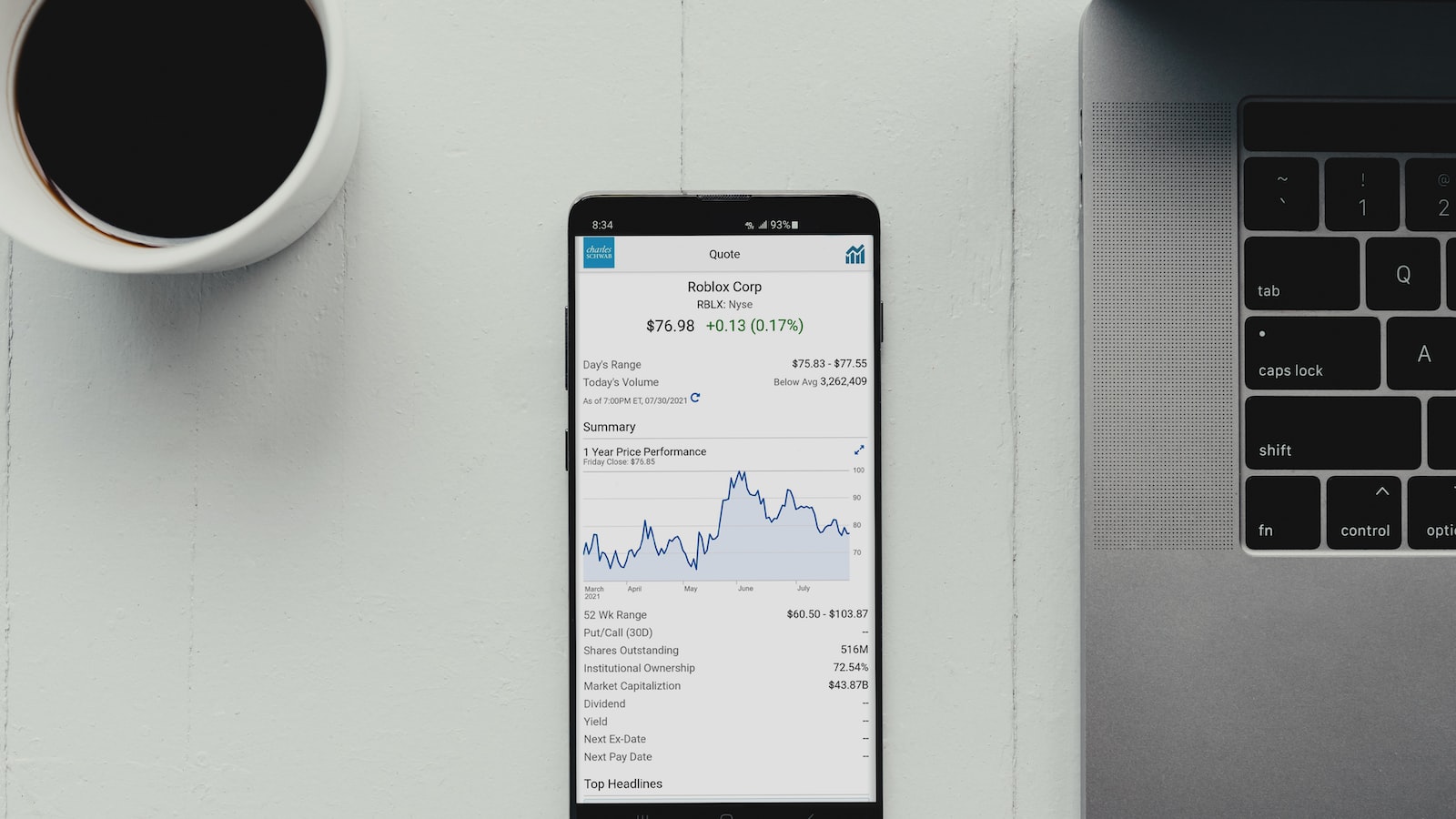In the ever-evolving world of finance, being aware of the key players in the financial market is essential for any individual or organization looking to navigate the intricate landscape of investments and trading. Among the prominent figures that shape the market’s dynamics are investors, traders, and institutions. These entities play a pivotal role in driving the market forward and can greatly influence our financial well-being. Whether you are a novice investor seeking to make informed decisions, an aspiring trader aiming to capitalize on market fluctuations, or an institution looking to optimize revenue generation, understanding the roles and contributions of these key players is crucial. Embark on this enlightening journey with us as we delve into the intricacies of the financial market and explore the pivotal roles played by investors, traders, and institutions.

Key Players in the Financial Market: Investors Spur Economic Growth with Long-term Vision
Investors, the driving force behind every thriving economy, play a crucial role in the financial market by fueling economic growth with their long-term vision. These astute individuals possess the foresight to identify lucrative opportunities and the determination to see their investments bear fruit over time. As key players, they make calculated risks, provide funds for capital projects, and foster innovation, making them the backbone of a prosperous financial landscape.
One of the key advantages investors bring to the table is their ability to inject essential capital into ventures that possess immense potential. Through their carefully researched investments, they provide the necessary funds for startups and established businesses to expand their operations, develop breakthrough technologies, and create employment opportunities. This inflow of capital breathes life into both existing and emerging sectors, stimulating growth, and bolstering overall economic stability. Moreover, their unwavering commitment to long-term success ensures that investments are not influenced by short-lived market fluctuations, but rather by a vision that spans years or even decades.

Understanding the Role of Traders: Driving Market Liquidity and Efficiency
Why is market liquidity and efficiency important?
Market liquidity and efficiency are crucial for the functioning of any financial market. Liquidity refers to how easily an asset or security can be bought or sold without significantly impacting its price. Efficient markets allow for the quick and fair execution of transactions, ensuring that all participants have access to the same information and pricing.
Role of Traders in driving market liquidity and efficiency:
Traders play a fundamental role in driving market liquidity and efficiency. They act as intermediaries between buyers and sellers, facilitating the smooth flow of assets and securities. By actively buying and selling, traders provide liquidity to the market, ensuring that there is always someone willing to take the opposite side of a trade. Their continuous presence helps maintain a reasonable bid-ask spread and reduces transaction costs.
- Traders improve market liquidity by:
- Enhancing price stability through their buying and selling activities.
- Providing liquidity during market stress by stepping in as buyers or sellers.
- Reducing the risk of price manipulation by continuously trading.
- Traders contribute to market efficiency by:
- Discovering and reflecting new information in asset prices.
- Identifying mispriced securities and implementing trades to correct market inefficiencies.
- Helping in the price discovery process, allowing market participants to make informed investment decisions.
In conclusion, traders are essential participants in financial markets as they stimulate market liquidity and efficiency. Their active involvement ensures that markets remain robust, transparent, and accessible for all participants, leading to fair pricing and increased confidence in the overall market ecosystem.
Unveiling the Power of Institutions: Enhancing Stability and Confidence in Financial Markets
Unveiling the Power of Institutions:
Enhancing Stability and Confidence in Financial Markets
Building Trust through Accountability: In the dynamic world of financial markets, institutions play a crucial role in promoting stability and confidence. These institutions act as guardians, ensuring transparency, integrity, and accountability in every transaction. By implementing stringent regulatory protocols, monitoring activities, and fostering ethical practices, they lay the foundation for an environment where both investors and market participants can have full trust and confidence in the system. Through their commitment to upholding standards and enforcing rules, these institutions instill a sense of security, attracting greater participation and investment into the financial markets.
Fostering Collaboration and Information Exchange: Another fundamental aspect of institutions lies in their ability to facilitate collaboration and information exchange among market participants. By fostering a climate of cooperation and knowledge-sharing, these institutions create a network that enables market players to make informed decisions. This exchange of information enhances market efficiency, minimizes information asymmetry, and enables better risk management. Moreover, institutions serve as a platform for resolving disputes and mediating conflicts, ensuring fair and equitable outcomes for all parties involved. These initiatives not only bolster stability and confidence in financial markets but also contribute to the overall growth and development of the economy.
Recommendations for a Thriving Financial Market: Collaboration and Regulation for Sustainable Growth
In order to ensure the long-term success and stability of the financial market, it is imperative that we embrace a collaborative approach that fosters cooperation among all stakeholders. By working together, we can create a more resilient and inclusive system that promotes sustainable growth.
To achieve this, it is crucial for regulators, financial institutions, and market participants to engage in open dialogue and establish robust frameworks. Collaboration between regulators and industry players can lead to the development of effective policies and guidelines that address emerging risks and promote responsible conduct. By sharing knowledge and best practices, we can strengthen the overall transparency and accountability of the financial market.
- Enhanced regulation: Stricter regulations need to be implemented to prevent unethical practices such as market manipulation or insider trading. These regulations should be regularly revised and updated to adapt to the evolving landscape of the financial market.
- Encourage innovation: Foster an environment that encourages innovation and technological advancements, while ensuring adequate safeguards are in place to mitigate associated risks. This will promote the development of new financial products and services that cater to the changing needs of consumers.
- Focus on financial literacy: Educate individuals about the importance of financial literacy to empower them in making informed decisions. By strengthening financial literacy, we can create a more knowledgeable and resilient society that can effectively navigate the complexities of the financial market.
- Promote sustainable investment: Encourage market participants to consider environmental, social, and governance (ESG) factors when making investment decisions. By prioritizing sustainable practices, we can drive positive change and contribute to a more sustainable future.
By fostering collaboration and implementing effective regulation, we can pave the way for a thriving financial market that not only benefits stakeholders but also contributes to the overall sustainability of our global economy.
In Retrospect
In conclusion, the financial market is a vast and complex landscape that is driven by the expertise and participation of key players such as investors, traders, and institutions. Each of these players brings unique perspectives and strategies to the market, contributing to its overall efficiency and growth. While investors provide the capital necessary for economic development, traders play a pivotal role in facilitating liquidity and price discovery. Institutions bring stability and expertise to the market through their extensive networks and resources.
Understanding the roles and dynamics of these key players is crucial for anyone looking to navigate the financial market successfully. Whether you are an individual investor seeking to grow your wealth, a trader seeking to seize profitable opportunities, or an institution aiming to maximize returns for your clients, it is essential to recognize the interplay between these actors and their impact on market trends.
Moreover, recognizing the potential synergies among investors, traders, and institutions can lead to fruitful collaborations and mutually beneficial partnerships. Institutions can offer individual investors access to a wider range of investment opportunities and expert guidance. Traders can provide institutions with enhanced liquidity and execution capabilities in the markets. By leveraging the strengths of these key players, participants can work together to create a more efficient, transparent, and secure financial market ecosystem.
Ultimately, the financial market thrives on the active participation and collaboration of investors, traders, and institutions. As market participants, it is our collective responsibility to foster an environment that promotes fair competition, transparency, and integrity. By acknowledging the vital roles played by these key players, we can contribute to a robust and sustainable financial market that benefits all stakeholders.
In conclusion, let us recognize and appreciate the diverse contributions of investors, traders, and institutions in shaping the financial market. By understanding their roles and forging collaborative relationships, we can unlock its true potential and strive towards greater prosperity for all.
The financial market is a vast and complex entity, intertwined by a multitude of different players – some of which are buying, others selling, and still more providing a range of services or instruments to facilitate trade. Among these participants, three key players stand out: investors, traders and institutions.
Investors typically enter the financial markets with long-term goals, such as retirement savings, and tend to trade a portfolio of assets over an extended period of time. Generally, they seek out low-risk, low-fee investments for optimal returns and diversification. Examples of investors include retail customers, pension funds, insurance companies, mutual fund managers and hedge fund managers.
Traders, unlike investors, are usually active participants in the market who seek to make profits from market movements by buying and selling securities or other instruments over a relatively shorter period of time. Traders often take more of a risk-tolerant approach with their trading strategies and use a wide range of derivative instruments such as options and futures to leverage their investment results. Examples of traders include day and swing traders, proprietary traders, scalpers, and market makers.
Institutions form the third key player in the financial market. These can include banks, exchanges, broker-dealers, government entities, and clearinghouses. They provide a range of services and products to the market, such as access to capital, advice, transferring of ownership, and safekeeping of assets. Their activities are essential for the smooth and orderly functioning of the financial system.
In conclusion, investors, traders, and institutions are all critical components of the financial market. Their different roles, approaches, and underlying strategies form an interconnected system that, when working in harmony, can drive capital flows, liquidity, and asset prices over the long run.

